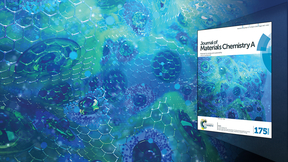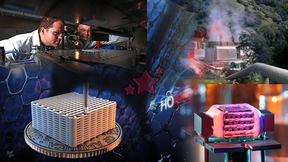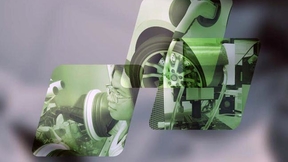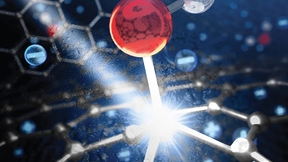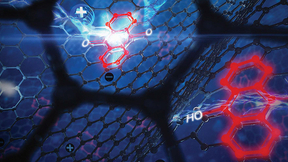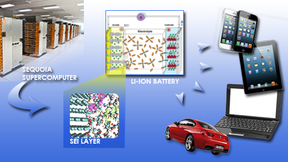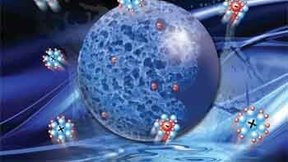Back
Batteries
3D-printed electrode is all charged up
The architectural design of electrodes offers new opportunities for next-generation electrochemical energy storage devices (EESDs) by increasing surface area, thickness and storage capacity. But conventional thick electrodes increase ion diffusion length and cause larger ion-concentration gradients, limiting reaction kinetics, including storage capacity. To overcome these…
Scientists pump up batteries with metal oxides
Material scientists at Lawrence Livermore National Laboratory have found certain metal oxides increase capacity and improve cycling performance in lithium-ion batteries.The team synthesized and compared the electrochemical performance of three graphene metal oxide nanocomposites and found that two of them greatly improved reversible lithium storage capacity.The research…
Using hydrogen to enhance lithium ion batteries
Lawrence Livermore National Laboratory scientists have found that lithium ion batteries operate longer and faster when their electrodes are treated with hydrogen.Lithium ion batteries (LIBs) are a class of rechargeable battery types in which lithium ions move from the negative electrode to the positive electrode during discharge and back when charging.The growing demand…
Bay Area labs team up to share clean energy, manufacturing expertise with small businesses
LIVERMORE— Lawrence Livermore National Laboratory (LLNL), in partnership with Lawrence Berkeley National Laboratory (LBNL) and Sandia National Laboratories/California (SNL/CA), have been awarded $4.15 million by the Department of Energy (DOE) to jointly launch a new small business voucher pilot.The three-way national lab partnership, known as LabSTAR, will be funded under…
Bay Area's three national labs join forces to work with energy storage, manufacturing companies
SAN FRANCISCO – Through the public-private consortium CalCharge, energy storage companies will soon have unprecedented and streamlined access to three U.S. Department of Energy national labs in the Bay Area — giving them a major competitive advantage in the fast-growing battery industry.CalCharge, which is designed to accelerate the development and deployment of energy…
New research could lead to more efficient electrical energy storage
Lawrence Livermore researchers have identified electrical charge-induced changes in the structure and bonding of graphitic carbon electrodes that may one day affect the way energy is stored.The research could lead to an improvement in the capacity and efficiency of electrical energy storage systems, such as batteries and supercapacitors, needed to meet the burgeoning…
Energy storage of the future
Personal electronics such as cell phones and laptops could get a boost from some of the lightest materials in the world.Lawrence Livermore researchers have turned to graphene aerogel for enhanced electrical energy storage that eventually could be used to smooth out power fluctuations in the energy grid.The team found that graphene aerogel-based supercapacitor electrodes…
Getting more life out of lithium-ion batteries
Your cell phone may stay charged longer due to advances in modeling lithium-ion battery storage capacity.New research indicates that lithium-ion batteries could benefit from a theoretical model created at Lawrence Livermore National Laboratory and Rice University that predicts how carbon components will perform as electrodes.The growing demand for energy storage emphasizes…
LLNL leads new initiative to improve lithium-ion batteries
A Lawrence Livermore team is working to improve lithium-ion battery performance, lifetime, and safety.Working with Lawrence Berkeley National Laboratory (LBNL), the scientists are developing a new methodology for performing first-principles quantum molecular dynamics (QMD) simulations at an unprecedented scale to understand key aspects of the chemistry and dynamics in…
Advanced carbon aerogels for energy applications
Because of their unique structure, carbon aerogels may be used for hydrogen and electrical energy storage in the future. Carbon aerogels (CAs) are a unique class of high-surface area materials derived by sol-gel chemistry in which the liquid component of a polymer gel has been replaced with a gas. Their high surface area and electrical conductivity, environmental…



